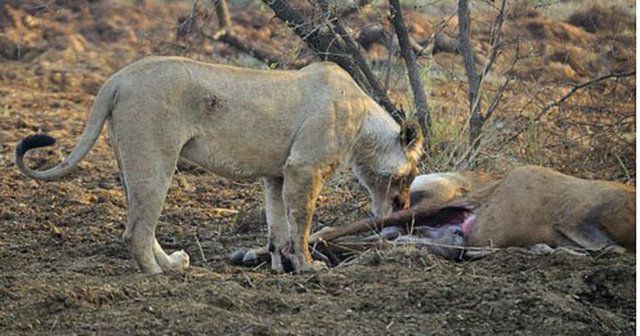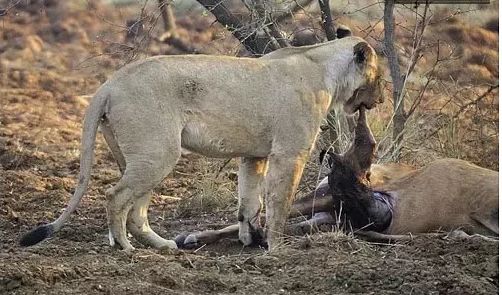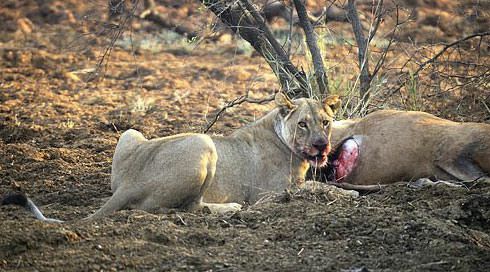The Remorseful Lioness: A Captivating Tale Of Nature’s Emotions
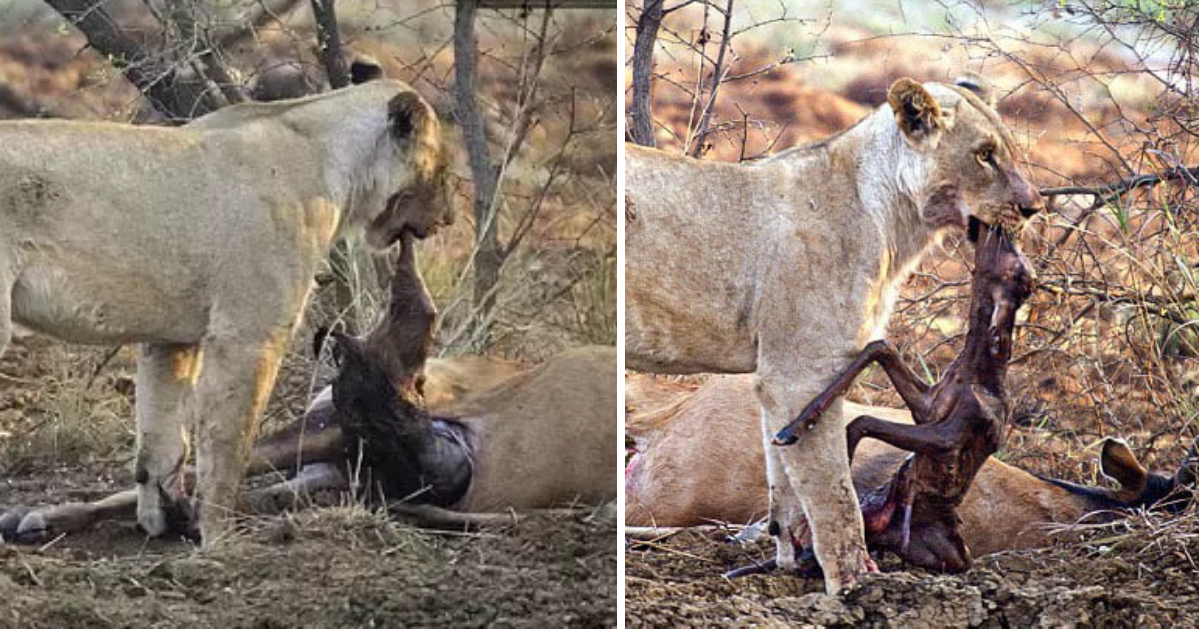
These astonishing images depict the harsh realities of nature, but also reveal a profound sense of empathy.
Upon realizing that the antelope she had killed was pregnant, a lioness goes to extraordinary lengths to show remorse. She delicately removes the unborn calf, attempts to revive it through gentle nudging, and safeguards and conceals it as if it were her own cub.
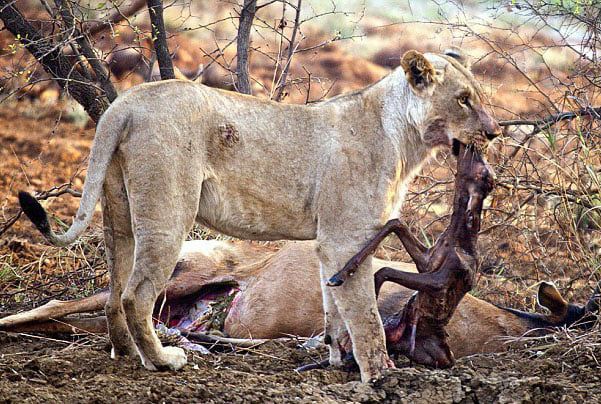
The lioness exhibits unmistakable regret for her actions, igniting a discourse about the consciousness of animals. These remarkable photographs were captured by Gerry Van Der Walt, a conservationist and reserve ranger.
During a recent visit to the Madikwe Game Reserve in South Africa, Gerry and a group of visitors chanced upon the predator and a lifeless Red Hartebeest antelope. Initially anticipating a routine feeding spectacle, they were soon astounded by what unfolded before their eyes.
Gerry, with over two decades of experience working with wildlife and reserves in South Africa, expected the lioness’s kill to follow the typical course. He shares, “My guests were also observing the scene through their video cameras and binoculars.”
“As the lioness began extracting what we presumed to be the stomach,” Gerry recounts, “she suddenly paused, and a ranger beside me said, ‘That is not the stomach.'”
Although Gerry had witnessed lions hunting pregnant prey in the past, where the predators simply continued their meal without any deviation, this encounter defied expectations. He adds, “The subsequent events left us all dumbfounded.”
Once the lioness had liberated the fetus from its mother, she handled it with great tenderness, spending a considerable amount of time sniffing and examining the unborn Hartebeest. Her behavior appeared unusual for a lioness in such circumstances, as if she were deeply disturbed by what had just occurred, constantly scanning her surroundings, seemingly seeking assistance.
“After a while, she resumed feeding and proceeded to remove the stomach contents,” Gerry explains, “yet she made a concerted effort to keep her distance from the fetus.”
However, her feeding eventually ceased, and her focus returned to the tiny life she had discovered. Gently gripping the fetus by its nose, she stood motionless, surveying her surroundings as if on high alert.
After several minutes, she embarked on a journey toward a nearby thicket, never releasing her watchful gaze. When she reached her destination, she gently laid the fetus on the ground, frequently nudging it with her nose, displaying signs of tension and apprehension.
She proceeded to nudge the fetus, rolling it over with her nose, before picking it up by the back of its neck, treating it as if it were one of her own cubs. The onlookers observed in awe as she carefully walked toward the thicket, placing the fetus at the bottom of the tall grass.
Continuing to survey her surroundings, alternating between anticipation and anxiety, she nudged the fetus a few more times before settling down.
Gerry and his guests watched in astonishment as the lioness returned to the carcass of the calf’s mother. Rather than continuing to feed, she looked around once again before slowly lying down, eventually drifting off to sleep.
“This was undoubtedly one of the most extraordinary instances of lion behavior I have ever witnessed,” Gerry reflects. He ponders the lioness’s thoughts, questioning why she reacted the way she did. Did her maternal instincts kick in? Could she sense a faint heartbeat? Was she attempting to protect the unborn Hartebeest?
This unexpected encounter caught everyone off guard and will forever remain etched in Gerry’s memory. While he may never fully comprehend the lioness’s intentions, he recognizes that they were witness to a captivating and poignant moment of African enchantment—a blend of cruelty and beauty.

